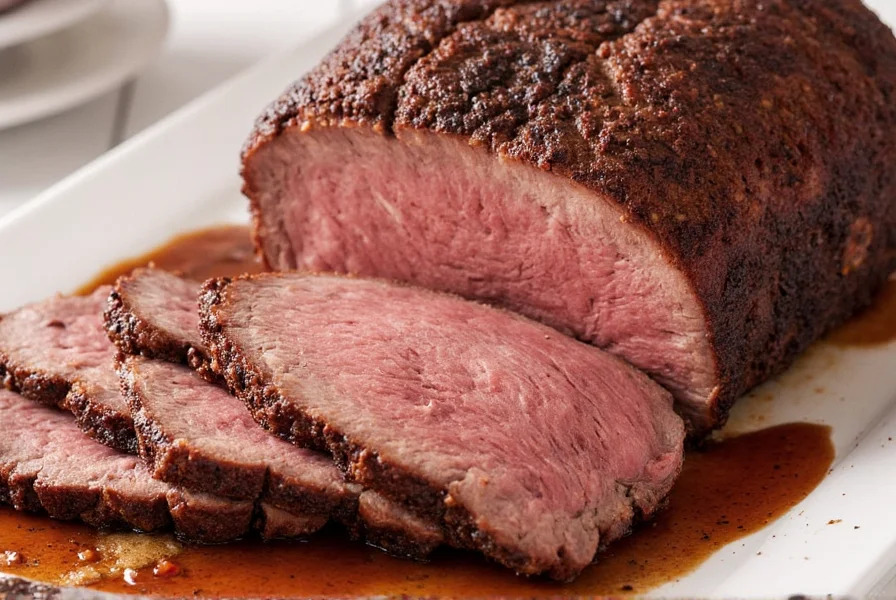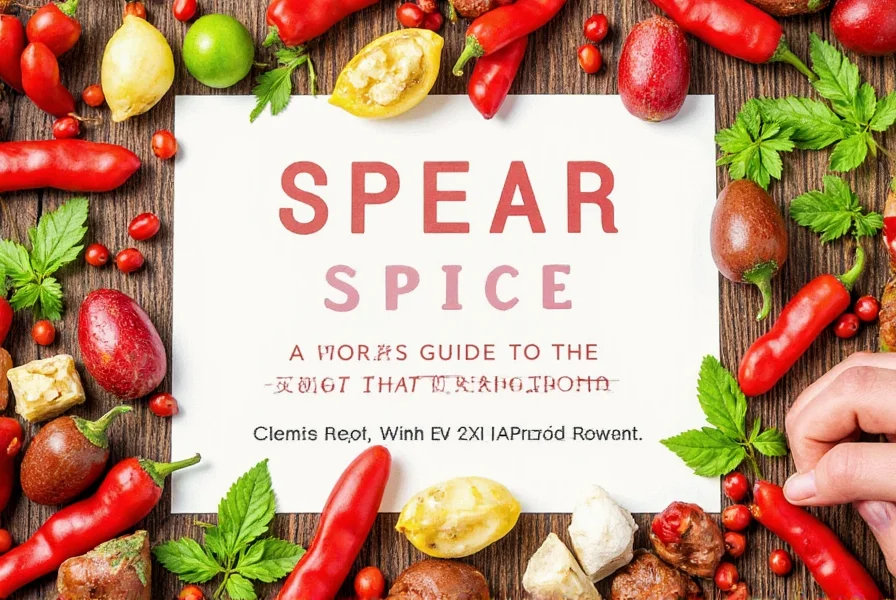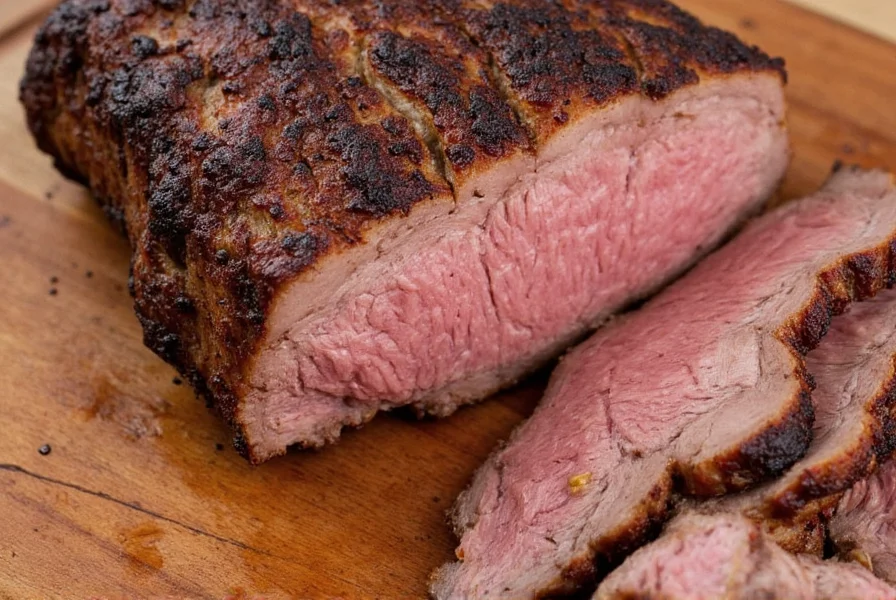Table of Contents
The Essential Spices for Perfect Roasted Brisket
When it comes to roasted brisket, the right spices are the key to unlocking incredible flavor. The top six must-have spices are smoked paprika, cumin, garlic powder, onion powder, salt, and black pepper. These ingredients create a balanced rub that enhances the meat's natural richness without overpowering it. In this guide, we'll dive deep into how to use each spice effectively, along with expert tips for seasoning, cooking, and storing your brisket rub.
Top 6 Spices for Roasted Brisket: Why and How to Use Them
For optimal flavor, focus on these core spices:
- Smoked Paprika: Adds deep smokiness and rich color—essential for authentic barbecue flavor without actual smoking.
- Cumin: Provides earthy warmth that complements beef's natural richness.
- Garlic Powder: Delivers savory depth without moisture issues from fresh garlic.
- Onion Powder: Enhances sweetness and umami for a well-rounded profile.
- Kosher Salt: The foundation for flavor balance; helps tenderize the meat.
- Coarse Black Pepper: Adds subtle heat and complexity to the crust.
For most recipes, a simple blend of these spices works best. Avoid overcomplicating—less is often more with brisket seasoning.
Understanding Spice Blends
While individual spices are important, the way you combine them matters. A well-balanced blend will complement the natural flavors of the brisket. Popular blends include:
- Classic BBQ Rub: Smoked paprika, garlic powder, onion powder, salt, and pepper.
- Smoky Chipotle Rub: Smoked paprika, chipotle powder, cumin, and a hint of brown sugar.
- Mexican-Inspired Rub: Chili powder, cumin, oregano, and a touch of lime zest.

Pro Techniques for Maximum Flavor
Now that you know the basics, let's move to actionable tips that deliver consistent results:
Tip 1: Apply Rub Overnight for Deep Flavor Penetration
For maximum flavor, apply your spice rub at least 12-24 hours before cooking. This allows salt to break down muscle fibers and spices to permeate deeper into the meat. Store uncovered in the refrigerator for best results.
Tip 2: Use a Meat Thermometer for Perfect Tenderness
Brisket requires precise cooking. Aim for an internal temperature of 195-205°F (90-96°C). Overcooking dries out the meat, while undercooking leaves it tough. Always use a reliable thermometer.
Tip 3: Let It Rest Before Slicing
After cooking, let the brisket rest for 30-45 minutes. This allows juices to redistribute, resulting in a juicier, more flavorful cut. Slice against the grain for maximum tenderness.
Tip 4: Match Spices to Cooking Method
Smoking benefits from robust spices like smoked paprika and cumin. For oven roasting, use slightly more delicate spices like sweet paprika and herbs. For braising, reduce salt by 25% since liquid conducts seasoning differently.
Buying Guide: Choosing the Right Spices and Tools
| Spice | Features | Best For |
|---|---|---|
| Paprika (Smoked) | Deep smoky flavor, rich in antioxidants | Adding color and smokiness to the rub |
| Cumin | Earthy and warm, enhances beef flavor | Balancing the spice profile |
| Garlic Powder | Concentrated garlic flavor, easy to use | Boosting savory notes |
| Onion Powder | Subtle sweetness and umami | Enhancing depth and richness |
| Black Pepper | Adds heat and complexity | Finishing touch for flavor balance |

Essential Tools for Seasoning and Cooking
Having the right tools makes the process smoother and more enjoyable. Here are some must-have items:
- Meat Thermometer: Ensures precise cooking temperatures.
- Spice Container: Keeps your rub fresh and easily accessible.
- Brush or Tongs: For applying rub evenly and flipping meat.
- Slow Cooker or Smoker: Depending on your preferred cooking method.
Conclusion: Master Your Brisket Game
Roasting the perfect brisket is about balance, patience, and the right spices. By focusing on these six core ingredients and applying professional techniques, you'll create a dish that delights every time. Remember: quality spices, proper timing, and resting are the keys to success.

Frequently Asked Questions About Brisket Spicing
How long should I let the spice rub sit on brisket before cooking?
For optimal flavor penetration, apply your spice rub at least 1 hour before cooking. For maximum results, refrigerate the seasoned brisket uncovered for 12-24 hours. This allows the salt to break down muscle fibers and the spices to permeate deeper into the meat.
Can I use fresh garlic and onions instead of powdered versions in my rub?
While fresh garlic and onions add wonderful flavor when cooking, they're not ideal for dry rubs. Fresh ingredients contain moisture that can create steam during cooking, preventing that desirable crust formation. Powdered versions distribute evenly, provide consistent flavor without moisture issues, and create the perfect bark on your brisket.
What's the best way to store homemade spice rubs?
Store your custom spice blends in airtight glass containers away from heat and light. Properly stored, most rubs maintain peak flavor for 6-12 months. Avoid storing in plastic containers as spices can absorb plastic flavors, and never keep them above your stove where heat degrades quality. For longer storage, keep in the freezer where spices retain potency for up to 2 years.
Why did my brisket turn out dry even with a good spice rub?
Dry brisket typically results from overcooking rather than seasoning issues. Brisket contains abundant connective tissue that needs proper breakdown. Cook to an internal temperature of 195-205°F (90-96°C), then let it rest properly. The spice rub enhances flavor but doesn't affect moisture retention—proper cooking technique and resting time are crucial for juiciness.
Can I make a spice rub without salt for dietary restrictions?
Absolutely. While salt enhances flavor and texture, you can create excellent salt-free rubs using paprika, garlic powder, onion powder, cumin, black pepper, and herbs like thyme or rosemary. Consider adding a small amount of acid (like citric acid powder) to mimic salt's flavor-enhancing properties. Just remember to adjust cooking time slightly as salt affects moisture retention.
How do I adjust my spice rub for different cooking methods?
Smoking benefits from robust spices like smoked paprika and cumin that can stand up to smoke. For oven roasting, use slightly more delicate spices like sweet paprika and herbs that might get overwhelmed by smoke. When using liquid-based cooking methods like braising, reduce salt content by 25% since liquid conducts seasoning differently than dry heat.










 浙公网安备
33010002000092号
浙公网安备
33010002000092号 浙B2-20120091-4
浙B2-20120091-4